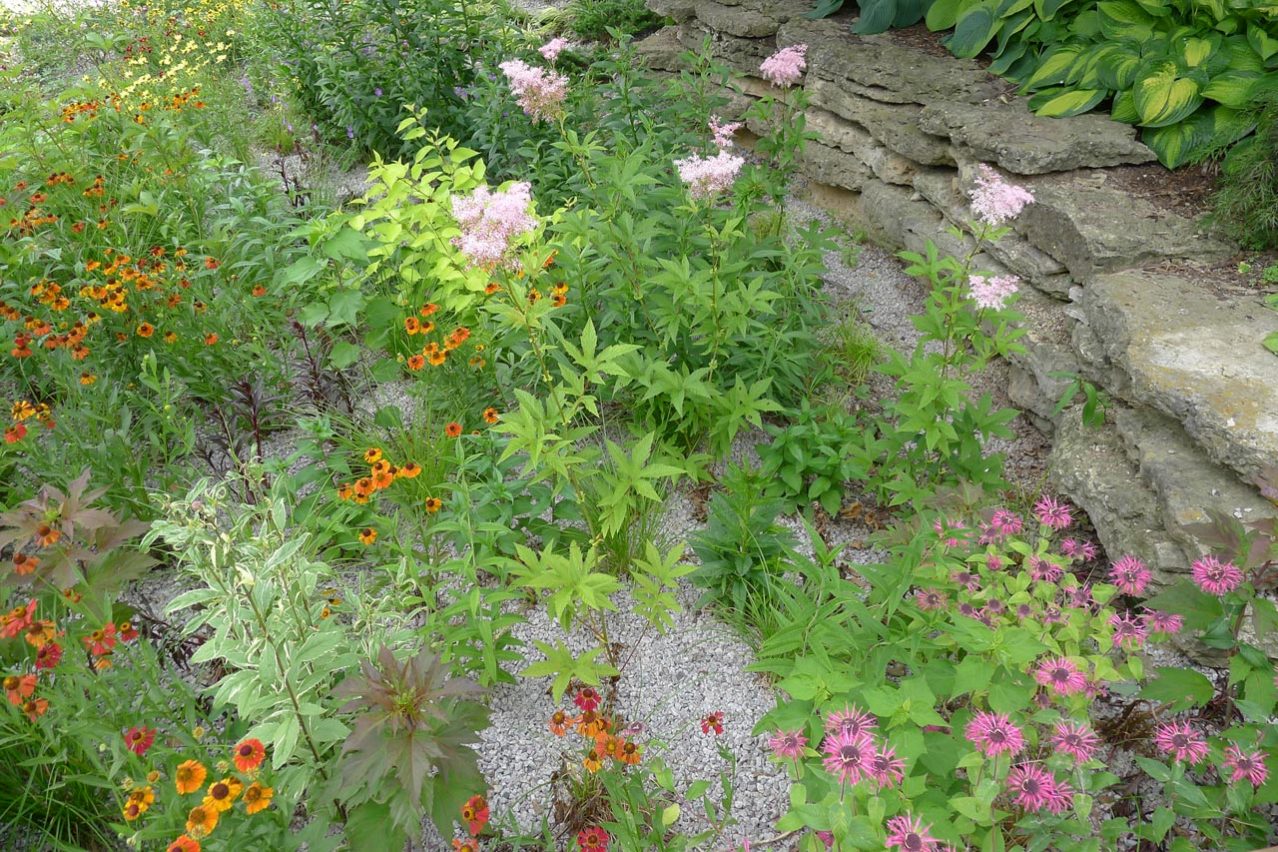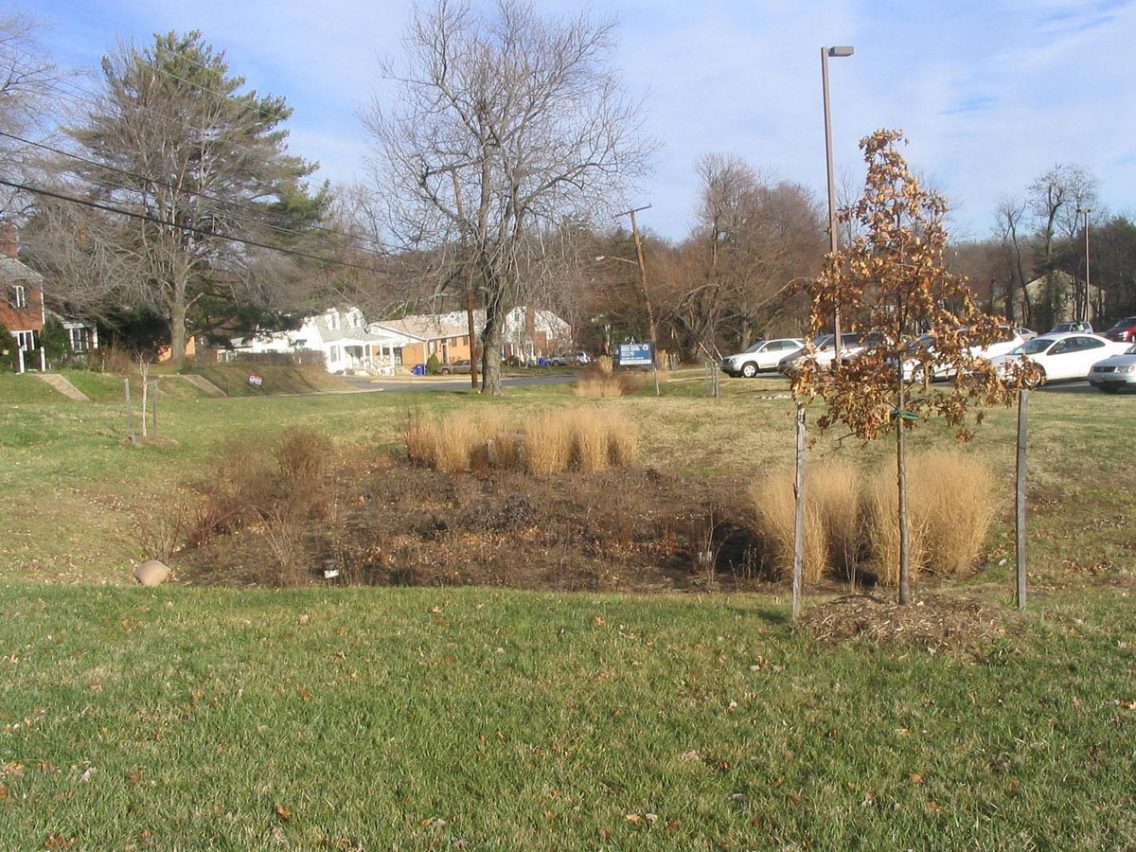
Basement Raingarden
Transforms the basement area of a recently-demolished house into a series of stepped raingarden tiers.
Cost
People
Upkeep
Experience
Stormwater
Sun/Shade
The Basement Rain Garden is an urban rain garden designed for the footprint of a recently demolished house. This lot design can reduce the amount of soil required to fill basement holes after demolition. The limits of the rain garden fit within the footprint of a former house and transforms the basement area into stepped, planted tiers. This design can accommodate stormwater runoff for up to two houses or commercial buildings.
It is best located on a lot where two disconnected downspouts can easily be redirected into the rain garden. This lot design is also suitable for flat lots. The excavated soil can be used for other lot designs, such as Mounds of Fun, that require fill.
Ideal Location: Residential lots in full sun to shade. (Ideal for lot with recently demolished home.)
Lot Type
Special Lot Condition
DFC 20 Year Land Use Area
Cost
The Basement Rain Garden is a higher priced lot design. The price is based on hiring a contractor, since there is a significant amount of earthwork and permitting requirements, including the basement fill specifications. We recommend hiring a professional who is qualified to move earth with machinery. Volunteer options are provided for planting and finishing the lot.
If you are starting with a level or completely backfilled lot, you and your contractor will also need a plan for using the extra soil you will excavate. The highest cost item in this lot design is the earthworks, which we strongly recommend a landscape contractor complete.
Habitat Benefits
Other Benefits
Green Infrastructure
This basement rain garden easily manages water from the roofs of two homes or commercial properties while taking advantage of the City’s current demolition standards. This lot design transforms the former basement area of a recently removed house into a series of stepped rain garden tiers, greatly improving the ability of a lot to capture and slow water on site. This lot design doesn’t only slow and store water, but also offers the potential to contribute to water quality by filtering out excess minerals. The Basement Rain Garden packs a powerful punch—delivering incredible contributions to our Great Lakes waterways, while creating a neighborhood-based habitat amenity.
Vegetation and Visibility
This lot design preserves clear visibility from the street to the alley.
Lifespan
Planting Type
Most Interesting Season
Other Consideration
Build
The Field Guide recommends hiring a professional to build the Basement Rain Garden, or at least to install the earthwork portion of the lot design. With the help of your friends, family or neighbors, the planting part of this project will take one weekend. A large group of volunteers (eight sets of hands or more!) organized by a knowledgeable lot leader will be able to complete this design in less time. If you would like to install only the plants yourself, please follow the step-by-step directions provided.
Because demolitions occur throughout the warm season, this lot design is divided into two steps: earthworks and planting. The earthworks may occur in every season except winter; the planting is best completed in the spring or fall. Please note that the easiest installation of the Basement Rain Garden will involve professional assistance.
Build Time Estimate
Ten hands or more! The volunteer planting part of this lot design should take one weekend to complete. The Field Guide recommends hiring a professional for assistance with at least the earthworks part of this lot design. Earthmoving is a craft—when in doubt, reach out for help!
Build Difficulty
Number of People Needed
Neighbor Labor
Time Taken to Build
Build Season
Transportation Intensity
Permit Requirements
Soil State
Other Build Considerations
Upkeep
Gardens require care and maintenance to thrive and look their best! The Basement Rain Garden is a large rain garden and will require regular watering and weeding, especially during the first few years. Do not let your rain garden dry out in the first warm season.
If you are not using a disconnected downspout, plan ahead and remember to think about where and how you will access water for the next month as you help your new plants establish!
In the first year, carefully weed or use a weed whacker to cut your rain garden meadow back to four to six inches whenever it reaches above 10 inches in height. Be careful not to cut back the potted perennials.
After the first year, continue weeding and weed whacking your rain garden in late fall or early spring of each year. This will keep the rain garden at its best. It will take about three years for your rain garden to establish.
The low-maintenance fescue mix should be watered daily until seedlings are four to six inches in height. Once established, grass will not require additional watering except during unusually dry periods. Plan to water your establishing grass for three weeks following installation or until your grass is four to six inches in height.
This family of floppy grasses is very drought-resistant and requires one cutting (in August or September) per year. Fescue grasses do not get tall.
Seasonal Upkeep Levels
- Spring: Low
- Summer: Low
- Fall: Low
- Winter: Low



